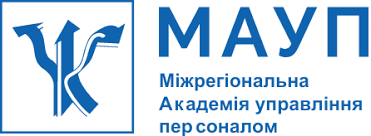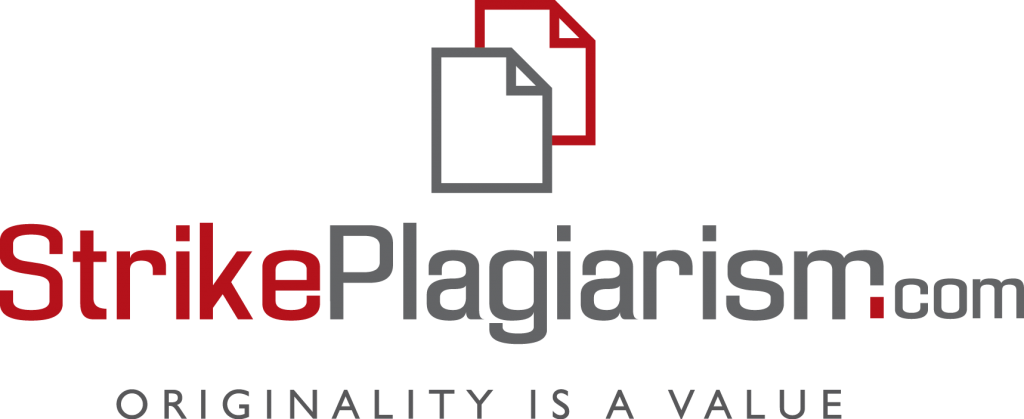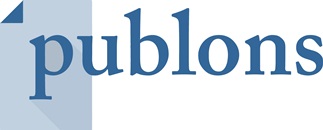INNOVATIVE HYDROGEL COMPOSITIONS FOR THE TREATMENT OF BURN WOUNDS WITH ANTI-INFLAMMATORY PROPERTIES: A LITERATURE REVIEW
DOI:
https://doi.org/10.32689/2663-0672-2025-1-8Keywords:
burn wounds, hydrogels, nanoparticles, antimicrobial agents, regeneration, polymeric materials, active pharmaceutical ingredients (API)Abstract
Burn injuries of the skin are a serious medical and social problem that requires effective treatment that can simultaneously control the inflammatory process, inhibit microbial contamination and stimulate tissue regeneration. The purpose of this study is to analyse the market for modern innovative hydrogel formulations used to treat burn wounds, with a focus on their anti-inflammatory properties, mechanisms of action, efficacy and potential limitations in clinical practice. Particular emphasis is placed on the possibility of introducing innovative hydrogel wound dressings with pronounced antimicrobial, anti-inflammatory and regenerative properties. Materials and methods. This study is based on an analysis of scientific publications contained in the PubMed, Scopus, and Web of Science databases from 2020 to 2025. The following keywords and their combinations were used to select the literature: «burn wounds», «hydrogels», «nanoparticles», «antimicrobial agents», «polymeric materials». The analysis involved scientific papers covering the effectiveness of hydrogel compositions in the treatment of burn injuries, including the results of laboratory experiments (in vitro), preclinical tests on laboratory animals (in vivo) and clinical trials (phases I-III). The article analyses publications that reveal the properties of hydrogel materials with a pronounced antimicrobial, anti-inflammatory and regenerative effect, as well as those that study the mechanisms of interaction of metal nanoparticles (Ag, Zn, Ti, Cu) with polymeric structures in the composition of dressings. Particular attention is paid to studies comparing the effectiveness of hydrogel compositions and traditional methods of treating burn wounds (antibacterial ointments, silicone dressings and collagen coatings). The results were evaluated using histological, microbiological and molecular biological methods of analysis. Results. Hydrogel compositions demonstrate high efficiency in the treatment of burn wounds due to their ability to maintain a moist environment, reduce cytokine levels and inhibit the growth of pathogenic bacteria. The integration of silver (Ag), zinc (Zn) and titanium (Ti) nanoparticles provides a pronounced antimicrobial effect, while polymeric nanoparticles improve the bioavailability of active ingredients and their prolonged release. The additional introduction of growth factors, polyphenols and analgesic substances promotes faster tissue regeneration and pain relief. Conclusions. The development of hydrogel wound dressings with combined antimicrobial, anti-inflammatory and regenerative properties is a promising area in modern medicine. Further research should be aimed at optimising the composition, biocompatibility and stability of the developed experimental hydrogel compositions for their further widespread implementation in clinical practice.
References
Башкірова Л. М. Використання нових мнемосхем і мнеморечень при викладанні питань ураження пучків плечового сплетення і поєднаного ураження периферичних нервів верхніх кінцівок при проведенні занять з лікарями-слухачами передатестаційних циклів з неврології. Збірник наукових праць співробітників НМАПО імені П. Л. Шупика. 2016. Вип. 26. С. 541–545.
Попадюк О. Я., Кіршак К. Б., Волошин М. М. Покращення профілактики вторинного інфікування опікових ран пацієнтів з термічними ушкодженнями шкірних покривів. Здобутки клінічної і експериментальної медицини. 2020. № 1. С. 156–160. DOI: 10.11603/1811-2471.2020.v.i1.11081
Проти опіків «Аквіор»: науковці університету виготовляють гідрогелеві пов'язки, які допомагають. Національний університет «Львівська політехніка». 2025. URL: https://lpnu.ua/news/proty-opikiv-akvior-naukovtsiuniversytetu-vyhotovliaiut-hidrohelevi-poviazky-iaki-dopomahaiut
Роїк О. М., Нікітіна О. О. Обґрунтування складу та технології виробництва гелю для лікування ран та опіків з екстрактом шавлії лікарської. Технології та інжиніринг. 2022. № 6 (11). С. 89–103. DOI: 10.30857/2786-5371.2022.6.9
Українські вчені створили нові комбіновані еквіваленти дерми для лікування тяжких опікових ран. Український медичний часопис. 2025. URL: https://umj.com.ua/uk/novyna-211613-ukrayinski-vcheni-stvorili-novi-kombinovaniekvivalenti-dermi-dlya-likuvannya-tyazhkih-opikovih-ran
Шигимага В. О. Природні та синтетичні біосумісні покриття опікових ран шкіри: методичні вказівки для самостійного вивчення дисципліни для здобувачів першого (бакалаврського) рівня вищої освіти денної (заочної) форми навчання, спец. 163 «Біомедична інженерія». Харків: Державний біотехнологічний університет, 2023. 18 с.
Шматенко О. П., Давтян Л. Л., Приходько Т. В., Кучмістова О. Ф., Тарасенко В. О., Козіко Н. О., Вороненко Д. В., Осьодло В. В. Сучасні аспекти лікування ранового процесу із застосуванням покриттів (пов’язок). Запорізький медичний журнал. 2022. Т. 24. № 5. С. 599–606. DOI: 10.14739/2310-1210.2022.5.252474
Bao Z., Xian C., Yuan Q., Liu G., Wu J. Natural Polymer-Based Hydrogels with Enhanced Mechanical Performances: Preparation, Structure, and Property. Adv Healthc Mater. 2019. Vol. 8, no.17. P. 1-17. DOI: 10.1002/adhm.201900670
Berlanga-Acosta J., Garcia-Ojalvo A., Fernández-Montequin J., Falcon-Cama V., Acosta-Rivero N., Guillen-Nieto G., Pujol-Ferrer M., Limonta-Fernandez M., Ayala-Avila M., Eriksson E. Epidermal growth factor intralesional delivery in chronic wounds: the pioneer and standalone technique for reversing wound chronicity and promoting sustainable healing. International Journal of Molecular Sciences. 2024. Vol. 25, no. 20. P. 1–17. DOI: https://doi.org/10.3390/ijms252010883
Cook K. A., Martinez-Lozano E., Sheridan R., Rodriguez E. K., Nazarian A., Grinstaff M. W. Hydrogels for the management of second-degree burns: currently available options and future promise. Burns & Trauma. 2022. Vol. 10. P. 1–17. DOI: https://doi.org/10.1093/burnst/tkac047
Eldebany N, Abd Elkodous M, Tohamy H, Abdelwahed R, El-Kammar M, Abou-Ahmed H, Elkhenany H. Gelatin Loaded Titanium Dioxide and Silver Oxide Nanoparticles: Implication for Skin Tissue Regeneration. Biological Trace Element Research. 2020. URL: https://doi.org/10.1007/s12011-020-02489-x
Geszke-Moritz M., Moritz M. Biodegradable polymeric nanoparticle-based drug delivery systems: comprehensive overview, perspectives and challenges. Polymers (Basel). 2024. Vol. 16, no. 17. P. 1–24. DOI: https://doi.org/10.3390/polym16172536
Goh M., Du M., Peng W. R., Saw P. E., Chen Z. Advancing burn wound treatment: exploring hydrogel as a transdermal drug delivery system. Drug Delivery. 2024. Vol. 31, no. 1. P. 1–15. DOI: https://doi.org/10.1080/10717544.2023.2300945
Huang C., Dong L., Zhao B., Lu Y., Huang S., Yuan Z., Luo G., Xu Y., Qian W. Anti-inflammatory hydrogel dressings and skin wound healing. Clin Transl Med. 2022. Vol. 12, no. 11. P. 1–21. DOI: https://doi.org/10.1002/ctm2.1094
Jeschke M. G., van Baar M. E., Choudhry M. A., Chung K. K., Gibran N. S., Logsetty S. Burn injury. Nat Rev Dis Primers. 2020. Vol. 6, no. 1. P. 1–25. DOI: https://doi.org/10.1038/s41572-020-0145-5
Kamlungmak S., Wonglapsuwan M, Surachat K, Deachamag P, Srichana T. Bioactivity of Mupirocin Nanoparticle-Loaded Hydrogel against Methicillin-Resistant Staphylococcus aureus (MRSA). Applied Microbiology. 2022. Vol. 2, no. 1. P. 260–271. URL: https://doi.org/10.3390/applmicrobiol2010019
Kapusta O., Jarosz A., Stadnik K., Giannakoudakis D. A., Barczyński B., Barczak M. Antimicrobial natural hydrogels in biomedicine: properties, applications, and challenges – a concise review. Int J Mol Sci. 2023. Vol. 24, no. 3. P. 1–29. DOI: https://doi.org/10.3390/ijms24032191
Kumar A., Sood A., Agrawal G., Thakur S., Thakur V.K., Tanaka M., Mishra Y.K., Christie G., Mostafavi E., Boukherroub R., Hutmacher D.W., Han S.S. Polysaccharides, proteins, and synthetic polymers based multimodal hydrogels for various biomedical applications: A review. Int J Biol Macromol. 2023. Vol. 247. P. 1-9. DOI: 10.1016/j.ijbiomac.2023.125606
Li L., Ma Q., Mou J., Wang M., Ye J., Sun G. Basic fibroblast growth factor gel preparation induces angiogenesis during wound healing. Int J Artif Organs. 2023. Vol. 46, no. 3. P. 171–181. DOI: https://doi.org/10.1177/03913988221145525
Lin X., Zhang X., Wang Y., Chen W., Zhu Z., Wang S. Hydrogels and hydrogel-based drug delivery systems for promoting refractory wound healing: applications and prospects. Int J Biol Macromol. 2025. Vol. 285. P. 1–19. DOI: https://doi.org/10.1016/j.ijbiomac.2024.138098
Liu M., Chen Y., Zhu Q., et al. Antioxidant thermogelling formulation for burn wound healing. Chem Asian J. 2022. Vol. 17, no. 16. P. 1–14. DOI: 10.1002/asia.202200396
Łukasiewicz S., et al. Polycaprolactone Nanoparticles as Promising Candidates for Nanocarriers in Novel Nanomedicines. Pharmaceutics. 2021. Vol. 13, no. 2. P. 191. URL: https://doi.org/10.3390/pharmaceutics13020191
Musial C., Kuban-Jankowska A., Gorska-Ponikowska M. Beneficial properties of green tea catechins. Int J Mol Sci. 2020. Vol. 21, no. 5. P. 1–11. DOI: https://doi.org/10.3390/ijms21051744
Olteanu G., Neacșu S. M., Joița F. A., Musuc A. M., Lupu E. C., Ioniță-Mîndrican C. B., Lupuliasa D., Mititelu M. Advancements in regenerative hydrogels in skin wound treatment: a comprehensive review. Int J Mol Sci. 2024. Vol. 25, no. 7. P. 1–47. DOI: https://doi.org/10.3390/ijms25073849
Pangli H., Vatanpour S., Hortamani S., Jalili R., Ghahary A. Incorporation of silver nanoparticles in hydrogel matrices for controlling wound infection. J Burn Care Res. 2021. Vol. 42, no. 4. P. 785–793. DOI: https://doi.org/10.1093/jbcr/iraa205.
Pantus A., Rozhko M., Paliychuk V., Kovalchuk N., Melnyk N. Microstructure of biopolymer micro-fibrous scaffold and its influence on the ability to retain medicines and tissue regeneration. Georgian Med News. 2023. Vol. 336. P. 37–44. URL: https://pubmed.ncbi.nlm.nih.gov/37166877/.
Preeti, Sambhakar S, Malik R, Bhatia S, Al Harrasi A, Rani C, Saharan R, Kumar S, Geeta, Sehrawat R. Nanoemulsion: An Emerging Novel Technology for Improving the Bioavailability of Drugs. Scientifica (Cairo). 2023. Vol. P. 1-25. DOI: https://doi.org/10.1155/2023/6640103
Radzikowska-Büchner E., Łopuszyńska I., Flieger W., Tobiasz M., Maciejewski R., Flieger J. An overview of recent developments in the management of burn injuries. Int J Mol Sci. 2023. Vol. 24, no. 22. P. 1–59. DOI: https://doi.org/10.3390/ijms242216357
Stoica A. E., Chircov C., Grumezescu A. M. Hydrogel dressings for the treatment of burn wounds: an up-to-date overview. Materials (Basel). 2020. Vol. 13, no. 12. P. 1–24. DOI: https://doi.org/10.3390/ma13122853
Tomić S.Lj, Vuković J.S. Antimicrobial Activity of Silver, Copper, and Zinc Ions/Poly(Acrylate/Itaconic Acid) Hydrogel Matrices. Inorganics. 2022. Vol. 10, no. 38. P. 1-12. DOI: https://doi.org/10.3390/inorganics10030038
Witkowska K, Paczkowska-Walendowska M, Plech T, Szymanowska D, Michniak-Kohn B, Cielecka-Piontek J. Chitosan-Based Hydrogels for Controlled Delivery of Asiaticoside-Rich Centella asiatica Extracts with Wound Healing Potential. Int J Mol Sci. 2023. Vol. 24, no. 24. DOI: https://doi.org/10.3390/ijms242417229
Xu Z., Han S., Gu Z., Wu J. Advances and Impact of Antioxidant Hydrogel in Chronic Wound Healing. Adv Healthc Mater. 2020. Vol. 9, no 5. P. 1–13. DOI: 10.1002/adhm.201901502
Yang Y.L., Chang C.H., Huang C.C., et al. Anti‐inflammation and anti‐apoptosis effects of pearl extract gel on UVB irradiation HaCaT cells. Biomed Mater Eng. 2015. Vol. 26. P. 139–145. DOI: 10.3233/BME-151299
Zhang Y., Huang Y. Rational Design of Smart Hydrogels for Biomedical Applications. Front Chem. 2021. Vol. 8. P. 1–13. DOI: 10.3389/fchem.2020.615665.
Zhao L., Zhou Y., Zhang J., Liang H., Chen X., Tan H. Natural Polymer-Based Hydrogels: From Polymer to Biomedical Applications. Pharmaceutics. 2023. Vol. 15, no. 10. DOI: https://doi.org/10.3390/pharmaceutics15102514










